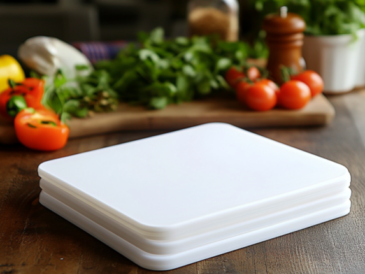Mint is one of the most versatile, hardy, and beneficial plants you can grow at home. Known for its refreshing aroma and countless uses, mint brings culinary, medicinal, and aesthetic value to any garden. However, mint’s reputation for rapid spread can make some gardeners hesitant to plant it directly in the soil. With the right strategies, you can enjoy the full benefits of mint without worrying about it overtaking your garden. Here are 16 reasons why you should grow mint and tips for keeping it contained.
1. Excellent Companion Plant for Pest Control
Mint is a natural pest repellent, making it an ideal companion plant in vegetable and herb gardens. Its strong scent deters common garden pests like aphids, cabbage moths, and ants, helping to protect nearby plants naturally.
2. Promotes Pollination with Fragrant Flowers
In the summer, mint produces clusters of delicate white, purple, or pink flowers, attracting pollinators like bees and butterflies. This helps boost pollination in your garden, supporting the growth and productivity of other plants.
3. Adds Flavor to a Variety of Dishes
Mint’s distinct flavor is a staple in many cuisines worldwide. Fresh mint leaves add a refreshing note to salads, sauces, marinades, and desserts. Plus, mint complements a wide range of beverages, from herbal teas to cocktails.
4. Provides Natural Relief for Digestive Issues
Mint has been used for centuries to ease digestive discomfort. The menthol in mint leaves relaxes digestive muscles, making it effective for relieving indigestion, gas, and bloating. Adding fresh mint to tea or warm water can provide soothing relief.
5. Simple to Grow Indoors or Outdoors
Mint is highly adaptable and can thrive in both indoor and outdoor environments. By growing mint in a pot, you can keep it indoors on a sunny windowsill or on a patio, allowing you to enjoy fresh mint year-round without the risk of it spreading in your garden.
6. Helps Freshen Breath Naturally
The natural oils in mint make it a popular ingredient in dental care products. Chewing fresh mint leaves can help neutralize odors, freshen breath, and kill bacteria in the mouth, providing a natural alternative to commercial mouth fresheners.
7. Versatile in Homemade Beauty Products
Mint is packed with antioxidants and anti-inflammatory properties, making it a valuable ingredient in homemade beauty treatments. It can be used in face masks, scrubs, and hair treatments to refresh, tone, and cleanse the skin and scalp.
8. Eases Respiratory Problems
Menthol, a key component of mint, can relieve respiratory congestion and act as a natural decongestant. Drinking mint tea or inhaling steam infused with fresh mint leaves can help ease symptoms of colds, sinusitis, and other respiratory issues.
9. Acts as a Natural Air Freshener
Mint’s strong, refreshing scent makes it an excellent natural air freshener for your home. Growing mint indoors or placing dried mint sachets in your living spaces can help eliminate unwanted odors, providing a fresh, clean fragrance.
10. Attracts Beneficial Insects
While mint repels many unwanted pests, it also attracts beneficial insects like hoverflies, which feed on aphids, and predatory wasps. These helpful insects play a vital role in maintaining a healthy garden ecosystem, providing natural pest control.
11. Produces Fast, Abundant Harvests
Mint is a vigorous grower, producing lush foliage throughout the growing season. By regularly harvesting the leaves, you encourage new growth and can enjoy a constant supply of fresh mint. This abundance makes it easy to experiment with mint in various recipes and projects.
12. Easy to Preserve for Future Use
Mint can be dried, frozen, or infused in oil to preserve its flavor and aroma. These methods allow you to store mint for future use in cooking, teas, or DIY products, ensuring you have access to its benefits even during the winter months.
13. Natural Remedy for Skin Irritations
Mint has soothing properties that can relieve itching and inflammation from minor skin irritations, such as bug bites or rashes. Applying crushed mint leaves or mint-infused water to the skin can provide a cooling, calming effect.
14. Perfect for Making Herbal Teas
Mint tea is both delicious and therapeutic. Whether served hot or iced, mint tea is known for its calming properties and digestive benefits. It’s easy to make at home by steeping a handful of fresh mint leaves in hot water for 5–10 minutes.
15. Enhances Your Garden Aesthetically
Mint’s lush green foliage and small, vibrant flowers add visual appeal to any garden. The plant’s aromatic qualities make it a sensory delight, creating a refreshing, relaxing atmosphere in outdoor spaces.
16. Easy to Contain with Simple Techniques
To enjoy all the benefits of mint without fear of it spreading uncontrollably, consider these simple containment methods:
- Grow in Containers: Plant mint in pots or containers, which you can place directly in the garden. This prevents the roots from spreading while allowing you to keep mint in your preferred location.
- Use Root Barriers: If planting directly in the ground, install root barriers to limit its spread. This keeps the plant confined to a designated area and makes it easier to control growth.
- Prune Regularly: Regularly trimming mint not only promotes healthy growth but also helps prevent it from spreading too far. Harvest often, and remove any runners or stems that stray from the main plant.
Conclusion
Growing mint offers countless benefits, from enhancing your garden’s health to providing fresh flavor in your kitchen. With a few strategic planting techniques, you can easily contain mint and harness its full potential without it taking over your garden.




